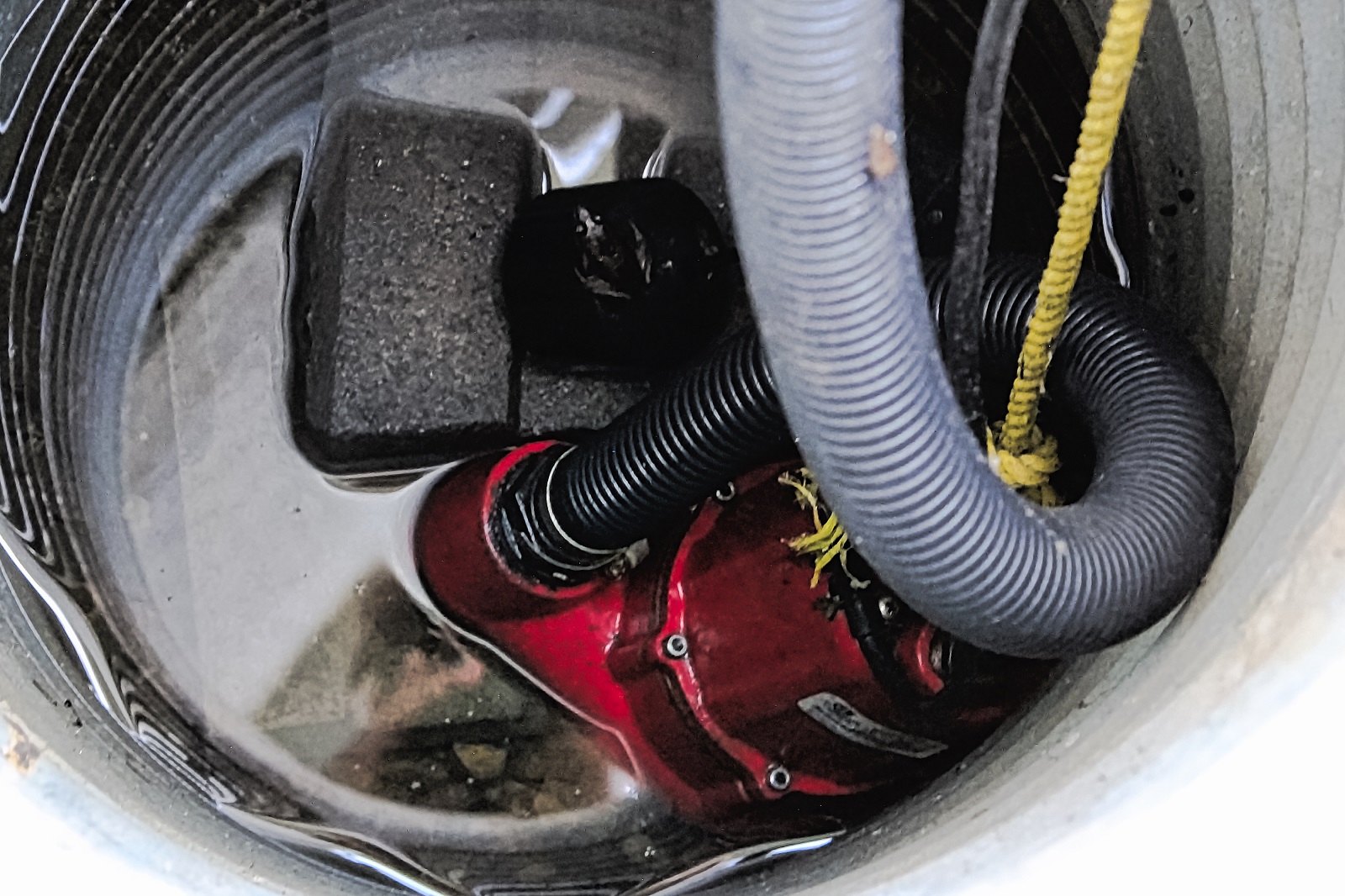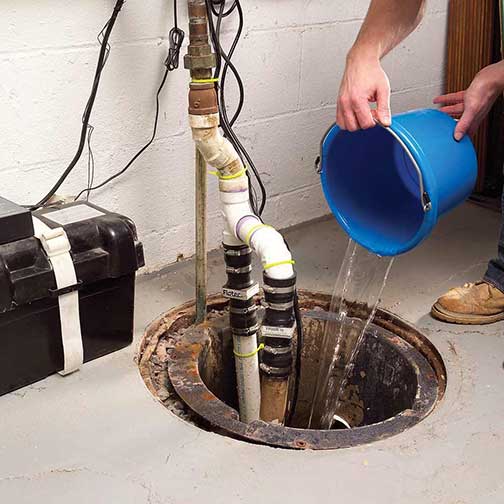How do you really feel in regards to Steps to Cleaning Your Sump Pump Properly?

Sump pumps are vital components in several homes, specifically in locations prone to flooding or extreme wetness. They assist avoid water damage by efficiently getting rid of excess water from cellars or crawl spaces. Nevertheless, like any other device, sump pumps require normal maintenance to guarantee they work properly when needed one of the most. Cleansing your sump pump is an essential part of its upkeep, and understanding just how to do it correctly can conserve you from pricey repair services and potential calamities.
Intro
Maintaining a clean sump pump is important for its proper functioning and long life. Ignoring this crucial task can bring about clogs, breakdowns, and inevitably, water damage to your building. Consequently, finding out exactly how to clean up a sump pump is vital for homeowners that rely upon these gadgets to keep their cellars completely dry and secured.
Recognizing the Sump Pump
Prior to diving into the cleansing process, it's necessary to have a standard understanding of how a sump pump works. Commonly set up in a pit or basin below the basement floor, a sump pump includes a number of crucial components, including a pump, a float button, and a discharge pipeline. When water gathers in the pit, the float button triggers the pump, which after that pumps the water out through the discharge pipeline, far from the building's structure.
Signs of a Dirty Sump Pump
Knowing when your sump pump requires cleansing is important for stopping possible breakdowns. Some usual signs that suggest a filthy sump pump consist of odd noises throughout procedure, lowered water flow, and visible particles in the pit. If you discover any of these signs and symptoms, it's essential to cleanse your sump pump immediately to avoid any kind of further concerns.
Preparing for Cleansing
Before you start cleansing your sump pump, it's essential to take some safety preventative measures. Begin by turning off the power to the pump to stay clear of any kind of electrical accidents. In addition, put on suitable safety gear, such as gloves and safety glasses, to shield on your own from dust, debris, and prospective microorganisms.
Detailed Overview to Cleaning a Sump Pump
Shutting Off the Power
Begin by separating the power supply to the sump pump to stop any kind of mishaps while cleansing.
Removing Debris and Dust
Make use of a pail or a scoop to remove any noticeable particles, dust, or debris from the sump pit. Dispose of the debris properly to stop it from obstructing the pump or the discharge pipe.
Cleaning the Pump and Float Change
As soon as the pit is free from particles, meticulously remove the pump from the pit. Evaluate the pump and the float button for any type of signs of damages or wear. Utilize a soft brush or fabric to cleanse the surfaces and eliminate any kind of gathered grime.
Purging the System
After cleaning the pump and float button, flush the sump pit with clean water to get rid of any staying dirt or sediment. This will certainly help make sure that the pump operates efficiently and effectively.
Looking For Correct Performance
Prior to re-installing the pump, carry out a quick test to guarantee that the float switch turns on the pump appropriately. Put some water right into the sump pit and observe the pump's procedure. If whatever is operating properly, you can reassemble the pump and reconnect the power supply.
Maintenance Tips to Maintain Your Sump Pump Clean
In addition to periodic cleaning, there are several maintenance tips you can follow to keep your sump pump in optimum problem:
Final thought
Cleansing your sump pump is an essential facet of its upkeep and guarantees that it operates successfully when you require it the most. By complying with the steps outlined in this guide and incorporating routine upkeep right into your regimen, you can expand the lifespan of your sump pump and shield your home from water damages.
6 STEPS ON HOW TO CLEAN A SUMP PUMP PROPERLY
UNDERSTANDING SUMP PUMPS
Your sump pump plays a crucial role in protecting your home by managing and removing excess water. It primarily functions as a “shield”, guarding your basement against the damaging effects of water accumulation. The pump is housed in a sump pit in the lowest part of your basement, and its job is to pump out any water that collects there.
During heavy rainfalls or when snow melts rapidly, water can infiltrate your basement, posing potential risks like flooding, structural damage, and harmful mold growth. Here, the sump pump springs into action, pumping out the intruding water and directing it away from your home.
SAFETY FIRST
Before cleaning, remember to prioritize safety. Disconnect the sump pump from the power source to prevent any accidental electric shocks. Also, wear sturdy gloves to protect your hands from any sharp or dirty components within the pump.
REMOVE THE SUMP PUMP
After ensuring your safety, the next step is to remove the sump pump from its pit. Doing this might require careful maneuvering as you don’t want to damage any pump components. Once removed, clean the sump pit to remove any accumulated debris or sludge.
INSPECT THE PUMP
Inspect the pump for any visible signs of wear or damage. Check the power cord, float switch, and impeller housing. If any components look worn out or damaged, consider replacing them to ensure optimal performance.
CLEAN THE PUMP
Thoroughly clean the pump with warm, soapy water. Make sure to rid it of any dirt, gravel, or other debris that might impede its performance. You can use a toothbrush to clean the small, hard-to-reach parts of the pump.
REINSTALL THE SUMP PUMP
Reinstall the pump into the sump pit Make sure it’s positioned correctly to remove the water effectively Once it’s back in place, reconnect it to the power source TEST THE PUMP
Finally, pour some water into the pit to ensure the pump works correctly. It should start automatically and begin pumping out the water; if it doesn’t, check the power source and the positioning of the pump.
Remember, while cleaning your sump pump is an essential part of home maintenance, hiring a professional plumber for a thorough inspection and cleaning at least once a year is also important. This will ensure that your pump is in optimal condition, ready to protect your home from potential water damage.
BEST PRACTICES FOR CLEANING SUMP PUMP DISCHARGE PIPES
Regular Inspection: Regularly inspect your discharge pipes, especially during heavy rainfall or snowmelt periods. Look for any signs of blockage or damage. Early detection of problems can prevent serious issues down the line. Periodic Cleaning: Over time, sediment and debris can accumulate in the discharge pipes, impeding the flow of water. Regular cleaning helps keep the pipes clear and functioning efficiently. You can use a high-pressure water jet to effectively clean the pipes. Insulation During Winter: In colder climates, discharge pipes can freeze, blocking the outflow of water. Protect your discharge pipes from freezing temperatures by insulating them with foam pipe insulation. This will ensure the sump pump can continue to discharge water even in freezing conditions. Proper Positioning: The discharge pipe should be positioned to direct water away from your home’s foundation. Improper positioning can lead to water seeping back into the basement. Ensure the pipe is long enough and angled correctly. Installation of a Check Valve: A check valve prevents water from flowing back into your sump pit after the pump has pushed it out. Installing a check valve helps maintain the efficiency of your sump pump and reduces the risk of flooding. Minimize Pipe Turns: Every curve or turn in the discharge pipe can decrease the efficiency of water flow. By minimizing turns and bends in your discharge pipe, you can increase the efficiency of your sump pump. https://www.fullspeedplumbing.com/how-to-clean-a-sump-pump-properly9999/

I came across that piece of writing on when perusing the internet. Loved our article? Please share it. Let someone else discover it. I appreciate your readership.
Call Today